If the lack of a green thumb has been keeping you from gardening, this is the perfect option to get started with. With its striking flowers and resilient nature, a kalanchoe is your best bet to cultivate the garden of your dreams.
Kalanchoe is a genus of 125 species of plants and succulents that are part of the stonecrop family Crassulaceae. It is native to Madagascar and tropical Africa. Kalanchoe plants are known for their oval-shaped and often scallop-edged green leaves.
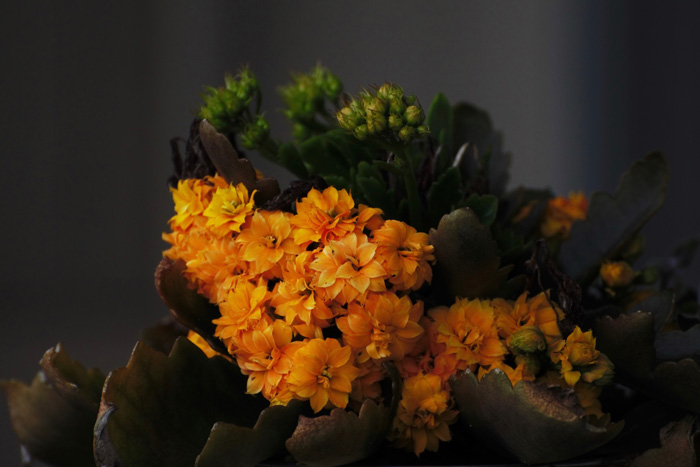
Image credits: Vijayalakshmi Nidugondi
Kalanchoe species are popular houseplants because they are durable, easy to grow, and can survive harsh conditions. This beautiful succulent can brighten your home with its flowers in various shades of red, magenta, pink, orange, yellow, and white. Here are some more details about the plant:
Kalanchoe Varieties
Kalanchoe succulents make excellent houseplants, and they can also thrive outdoors. Here are some incredibly diverse and gorgeous Kalanchoe types that can be planted in your home or outside.
Florist Kalanchoe (Kalanchoe blossfeldiana)
Image credits: seyfi durmaz
This is the most popular of all kalanchoes and a prolific bloomer, making it a favorite among florists (hence the name). It is also nicknamed the Christmas kalanchoe because it is typically sold around Christmas. You can recognize Kalanchoe blossfeldiana by its slightly fleshy bright green leaves with scalloped edges.
This cultivar has three petal formations: single, double, and rose. Single petals have a star-like shape, while double petals have an additional set of four or more inner petals. Lastly, rose-like flowers have many petals that make them look like fully opened roses in bloom.
Devil’s Backbone (Kalanchoe daigremontiana)
Image credits: Linda Luz
This plant can be propagated from numerous tiny plantlets that grow along the edges of its leaves. That’s why it is also called the mother of thousands. It is easy to grow the succulent by picking up fallen plantlets and planting them in the soil.
It is essential to know that many parts of this plant contain a toxic steroid, daigremontianin. Hence, the succulent can pose risks to humans and animals if ingested or if its sap comes in contact with the skin or eyes. Handling this plant with care is a must.
Cathedral Bells (Kalanchoe pinnata)
Image credits: at infinity
This beautiful houseplant is called the cathedral bells because it produces bell-shaped blooms. This succulent is native to Madagascar and has become naturalized in tropical and subtropical areas. It is one of the kalanchoe species that requires a lot of warmth and bright light to flower.
Paddle Plant (Kalanchoe thyrsiflora)
Image credits: Kathleen Culbertson
This one is known as the paddle plant because it grows rose-like, flat, and round leaves. What’s special about it is that the plant dies after flowering but continues to thrive through offsets that grow around the base of the plant. This growth pattern creates a continuous cycle of renewal.
Panda Plant (Kalanchoe tomentosa)
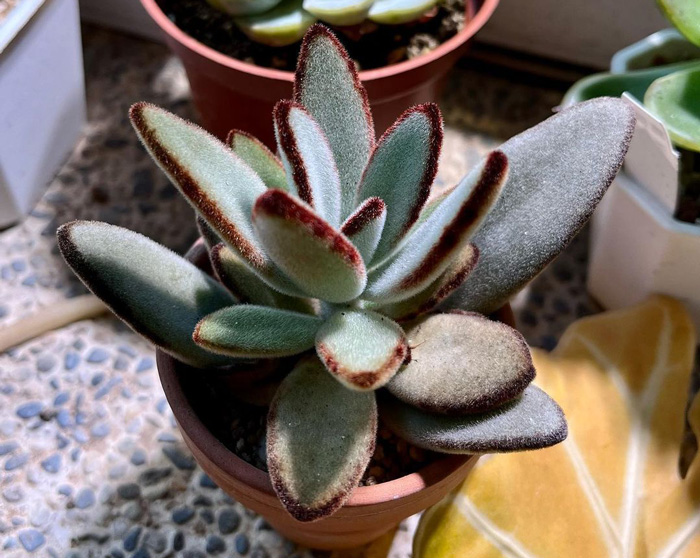
Image credits: pagechu
Kalanchoe tomentosa is also called the panda plant because it produces thick, fuzzy leaves with a blue tinge and brown spots around their edges. It is adapted to conserve water and has a thick stem with many branches. When you prune the plant, it looks like a picturesque shrub or bush, adding a touch of lush elegance to any space.
Lavender Scallops (Kalanchoe fedtschenkoi)
Image credits: Lucie Douezi
This kalanchoe type makes a great garden plant and can grow quite tall. It takes several years for this succulent to bloom. But once it does, you will enjoy seeing its beautiful shades of red during spring. At times, when the flowers are exposed to sunlight, you may observe a delightful creamy lavender hue gracing their petals.
RELATED: 57 Amazing Plant Facts
All You Need to Know About Kalanchoe Care
Kalanchoe plant care is easier than you can imagine. However, you must consider a few things to ensure these flowering plants get the best care.
Sunlight
Image credits: ron_holwadel
These succulent plants thrive in bright, indirect light. You can grow the kalanchoe indoors by placing it on a windowsill. If you grow it outside, ensure it gets protection from the late afternoon sun. The plants will get spindly or develop leggy stems if the indoor light is too low. You can use a plant grow light to provide the warmth and brightness that kalanchoes require.
Water
Image credits: Elina Sazonova
Caring for kalanchoe is easy because succulents don’t need water as frequently. So, if you habitually forget to water your plants, this is your best option! Overwatering can damage the kalanchoe, so allow it to dry out entirely before pouring more water.
This will help prevent root rot. You can check the dryness of the soil by putting your finger on it. An indoor plant needs only 2–3 waterings every month, and an outdoor plant can be watered once a week.
RELATED: An Easy Way To Make A Self-watering Plant
Soil
Image credits: Gary Barnes
The kalanchoe grows best in loose, loamy, sandy, well-draining potting soil like cactus mix. Kalanchoe care indoors is about creating a soil mix that doesn’t retain too much moisture. Get a plant pot with many drainage holes so that it doesn’t hold excess water.
Temperature and Humidity
Image credits: akaleilou
This popular houseplant isn’t as fussy about temperature as other indoor plants. It thrives in a fairly wide range of temperatures of 59–95°F (15–35 °C). Although kalanchoes can thrive in cooler temperatures, they do best in warm climates. Nevertheless, kalanchoes can die from frost, so they should be overwintered indoors.
Fertilizer
Image credits: Teona Swift
You should fertilize kalanchoes once a month, especially during spring and summer. Switch to a fertilizer higher in phosphorous if you don’t see as many kalanchoe flowers. Always follow the instructions on the product’s label. However, a liquid fertilizer is generally a better option because it will get absorbed quickly and is harder to overdose.
Winter Care
Image credits: Squirrel_Toboggan
Bring your kalanchoe inside during the winter. If the temperature falls below 33°F (1°C), its leaves will begin wilting, and the plant might get frost damage. The succulent also needs less water in the winter than in summer or spring. Allow the soil to dry out thoroughly before you water it.
How to Grow a Kalanchoe Plant
These plants tend to be slow-growing. They can take an average of 2–5 years to reach their mature size. Here’s how you can plant and grow the succulent.
Grow Kalanchoe From Seeds
Image credits: Bacon8er8
- In early spring, place the seeds in dry soil and add very little water.
- Ensure the seeds get proper light to germinate.
- Place the pot in a plastic bag, which will increase the humidity and help the seeds germinate quickly.
- After two months, transplant the seedlings into individual pots or plant them outside.
RELATED: A Scientist Grew A Plant From A 32,000-Year-Old Seed
Kalanchoe Propagation
Another way to grow kalanchoe is through stem cuttings. As we mentioned earlier, you can also propagate kalanchoe from leaf offsets or plantlets. Offsets absorb a lot of energy from the parent plant, so propagation benefits the kalachoe’s health.
Image credits: JelliedBiscuit
Follow these easy steps if you want to propagate kalanchoe through stem cuttings or offsets:
- Take a sharp knife and cut a fleshy stem segment, 2–3 inches long, from the mature plant. Once you do that, let the cutting dry until the chopped end seals shut.
- If you are growing from offsets, simply remove them from the joint where they connect to the parent plant. Ensure they have some roots or root nodules attached.
- Place the cutting or offset in soil and make sure they get bright, indirect sunlight. Water them only when the soil gets dry.
- The new Kalanchoe will start taking root within a month.
RELATED: Easy Tips And Tricks For Flower Propagation
How to Repot a Kalanchoe
- Stop watering the kalanchoe two weeks before you want to repot it.
- Loosen the plant’s roots and turn the pot upside down to remove the succulent and the soil.
- Loosen the soil around the root mass.
- Find a container one size bigger than the original plant pot.
- Put pebbles at the bottom of the pot for better drainage.
- Fill the pot with soil and place the plant in the center.
- Pack soil around and on top of it, leaving a distance of half an inch from the root ball to the top of the container.
- Water the plant and place it in bright sunlight.
How to Prune
Pinch off dead or dying blooms and stalks. Use shears to trim the flower stalks, encouraging the plant to branch out and improve its foliage. Kalanchoe is quite forgiving, so don’t stress too much about pruning.
It’s all about keeping your plant healthy and looking its best. Just adjust how often and how much you prune based on the type of kalanchoe you have and how you want it to grow.
How to Get a Kalanchoe to Bloom or Rebloom
Kalanchoes produce colorful blooms almost year-round if you control their exposure to light. However, these plants need a hibernation or rest period to gain enough energy to bloom.
Image credits: Rebecca Niver
You can mimic their winter cycle by keeping the succulent in darkness for at least 14 hours daily for six weeks. Provide indirect sunlight for the remaining hours of the day. Don’t water the plants until you begin to see flower buds emerge. Once the colorful flowers appear, let the plant enjoy full sun and enough water.
Grow and Care for Kalanchoe Blooms by Deadheading
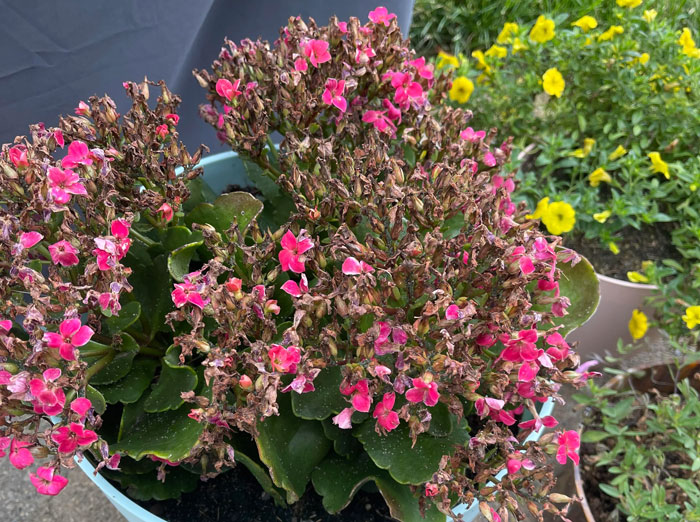
Image credits: courtneyrachh
Deadheading is the process of removing flowers from the plant once they have dried. This helps the succulent to keep flowering and keeps the kalanchoe looking tidy. You can also pluck off dry and brown leaves or branches.
Pests, Problems, and Diseases
Although kalanchoes are low-maintenance plants, they are still susceptible to some common problems.
Pests
Image credits: RoseSkye
Mealybugs, aphids, and brown scale are the most common pests that affect kalanchoes. If you find an infestation, isolate the affected areas. Wipe the infected parts with a cotton swab dipped in alcohol. You can also remove brown scale by scraping it off. Get rid of aphids by picking them off the plant.
Mildew
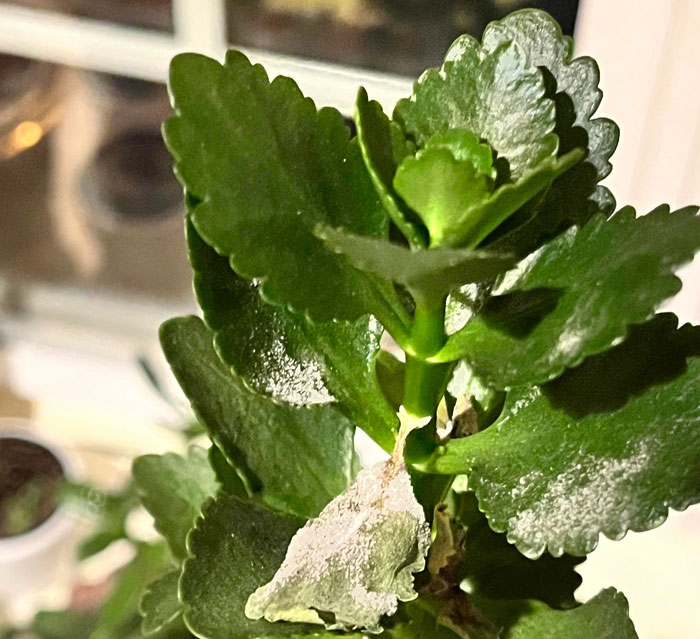
Image credits: katabatic-syzygy
Powdery mildew develops on the kalanchoe in the form of fine webbing. The plant’s leaves may look mottled and have yellow spotting, dead flecks, or certain ring spot patterns. To prevent this disease, make sure that the kalanchoe gets enough airflow. You can treat mildew by applying baking soda to the affected areas.
Soft Stems
Image credits: outersenshi
If you overwater the kalanchoe, you will notice that its stem will start wilting, and its roots will begin to rot. If you see this happening, stop watering the plant till it recovers. Ensure the plant is kept in a pot with many drainage holes.
RELATED: Amazing Plant Comebacks That Are Oddly Inspirational
Where’s Your Plant-Astic Kalanchoe?
We can’t wait to see your kalanchoe’s pictures and to know which variety you liked best. With all this talk of succulents, here are some unusual ones, like rose-shaped succulents and dolphin succulents, that just might tickle your fancy!
Frequently Asked Questions (FAQ) About Kalanchoes
How Long Do Kalanchoe Plants Live?
Kalanchoes are hardy succulents, and they can thrive for up to seven years or even longer if you look after them well. Keep pruning the plant, repotting it when it gets too big, and removing or replanting offshoots.
What to Do With Kalanchoe After Flowering?
You can do a couple of things with the kalanchoe once it is done flowering. You could pick the showy blooms and create flower herbariums. Or, if you love it when the succulent flowers, you can trick it into reblooming after six weeks. The last thing you can do to improve the plant’s health is to pick off dead or wilting leaves and flowers as soon as you see them.
Can Kalanchoe Be Used to Treat Cancer?
It is interesting to note that Kalanchoe pinnata has the potential to fight cancer. Studies have shown that its phytochemicals can enhance therapeutic efficacy when combined with chemotherapeutic drugs.

 Dark Mode
Dark Mode 

 No fees, cancel anytime
No fees, cancel anytime 






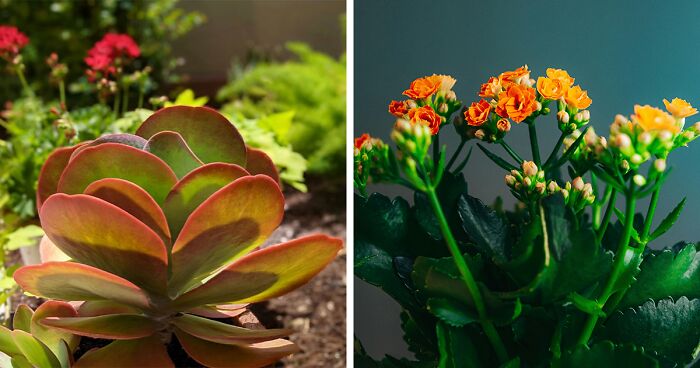
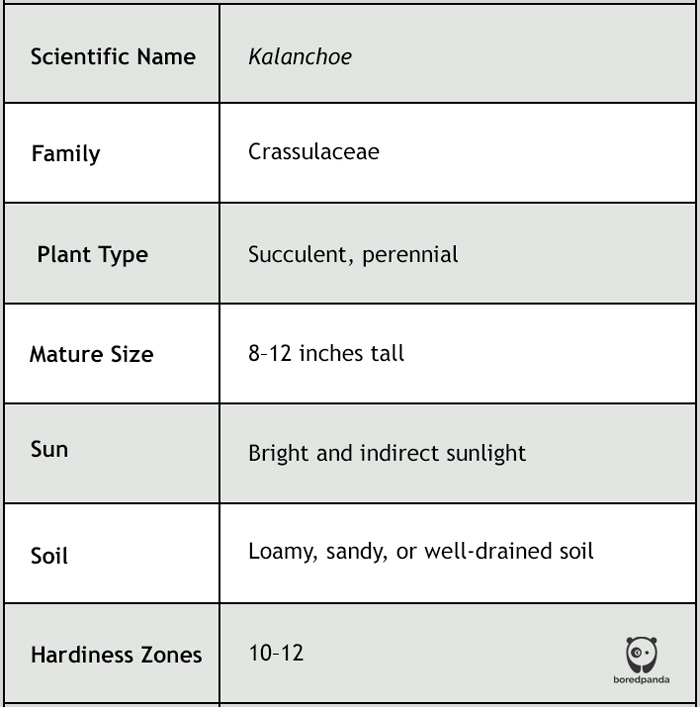
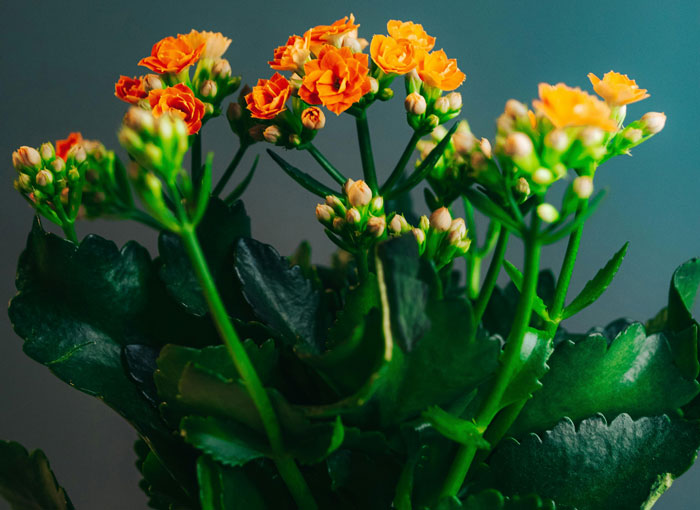
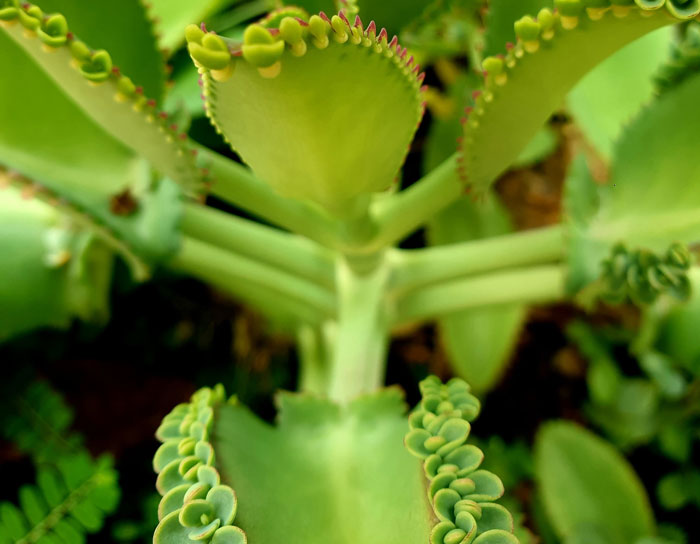
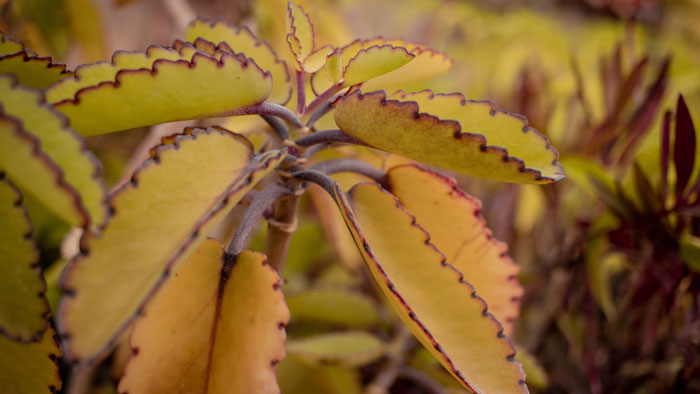
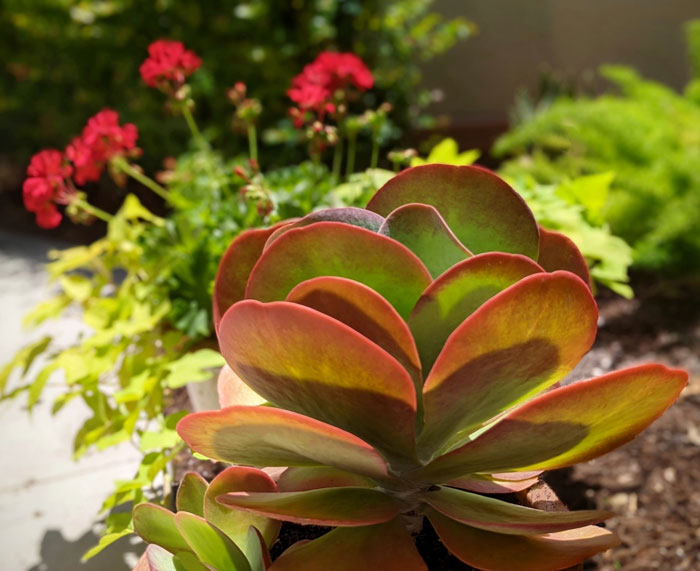
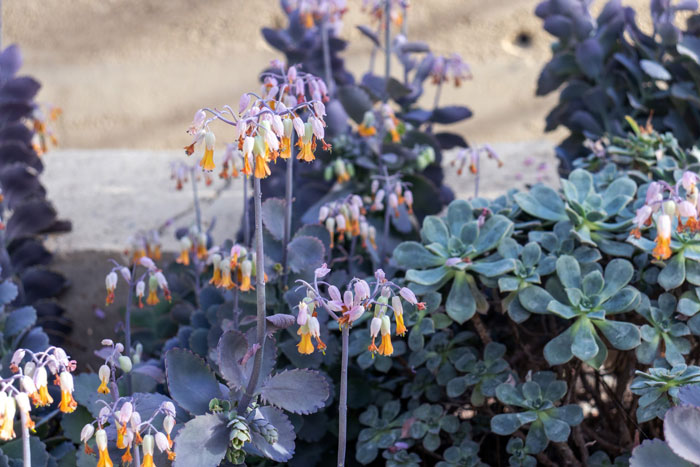
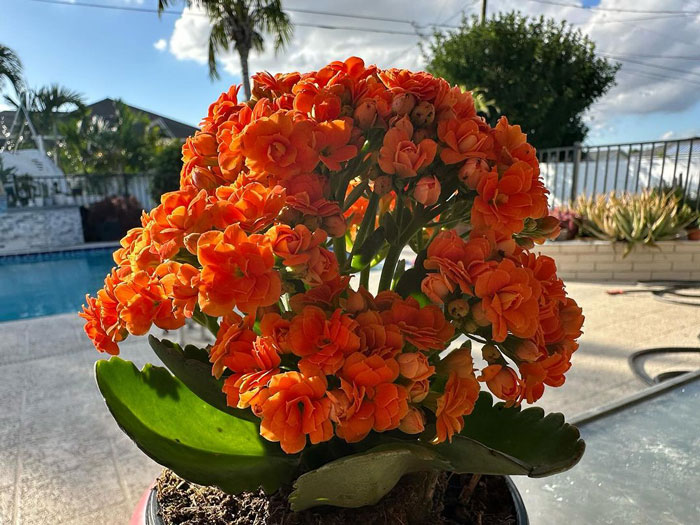
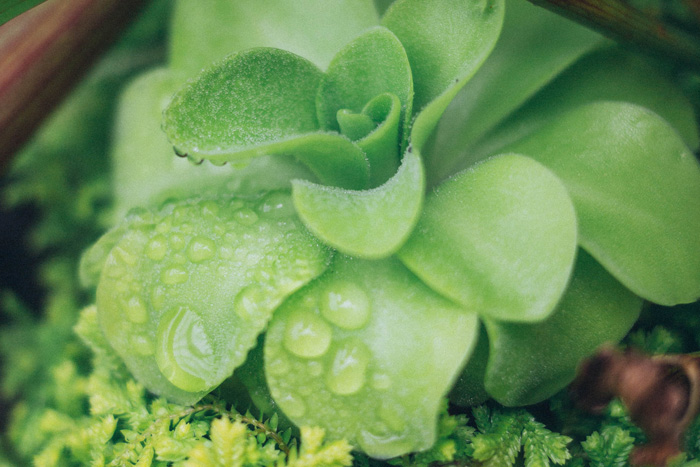
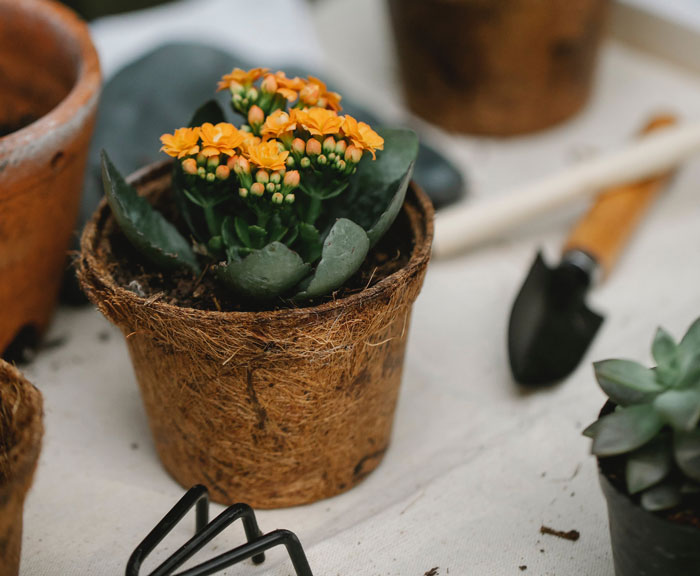
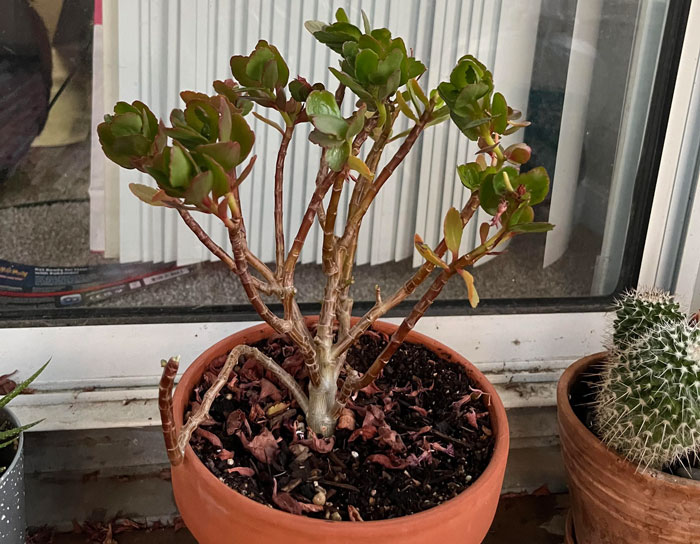
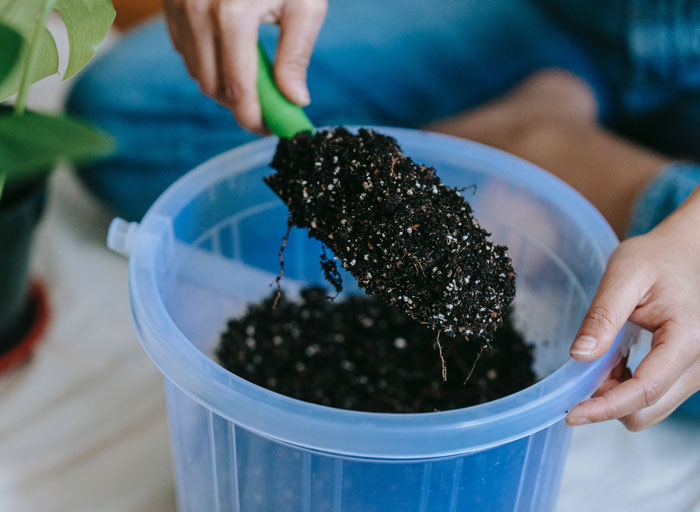
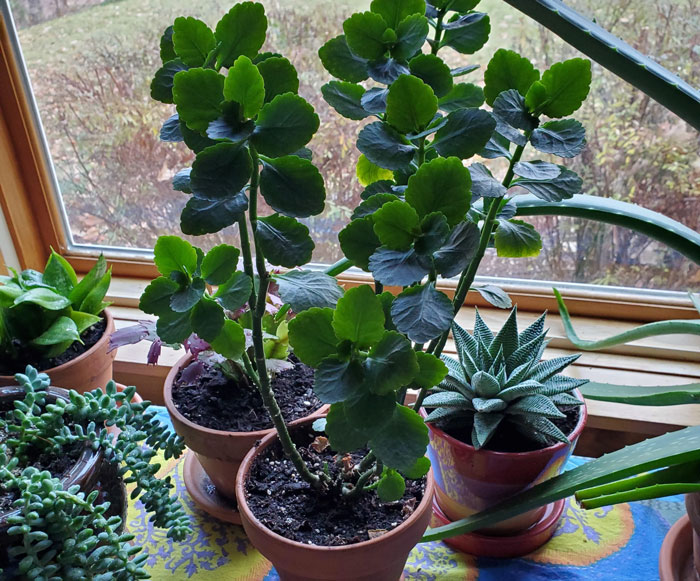
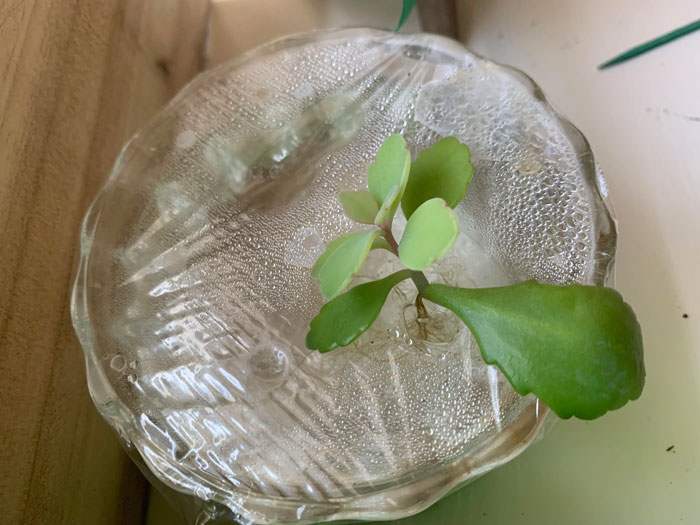
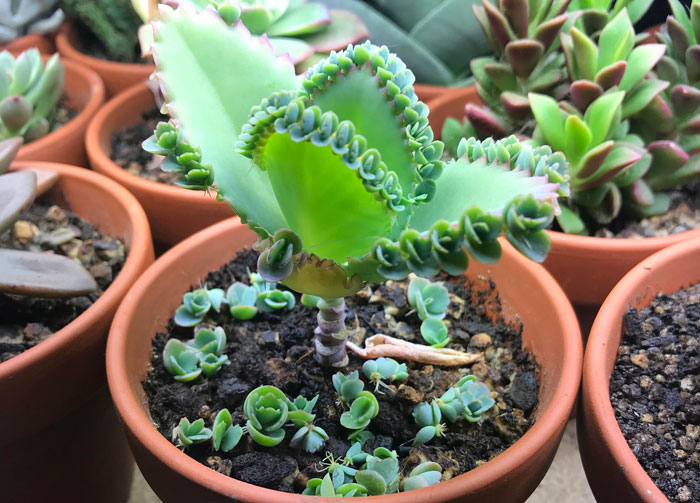

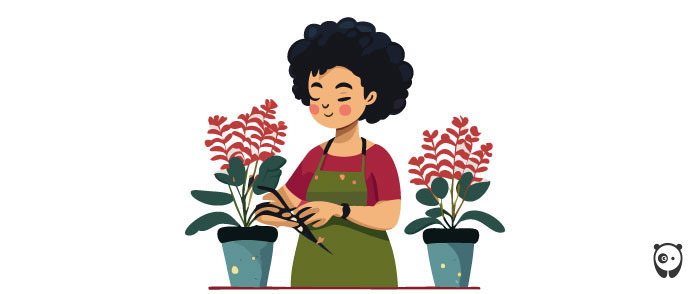
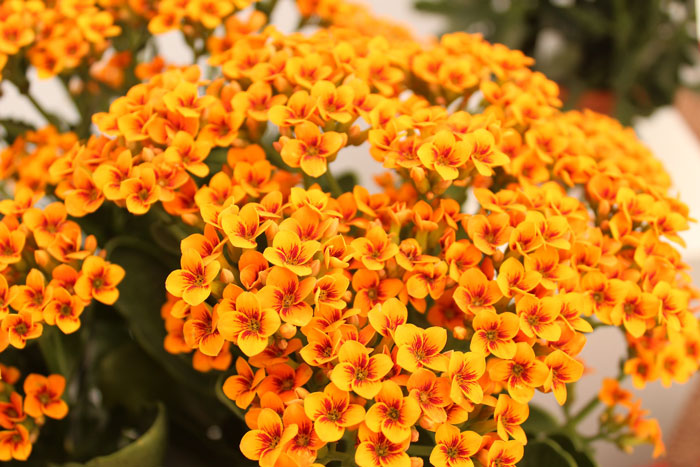
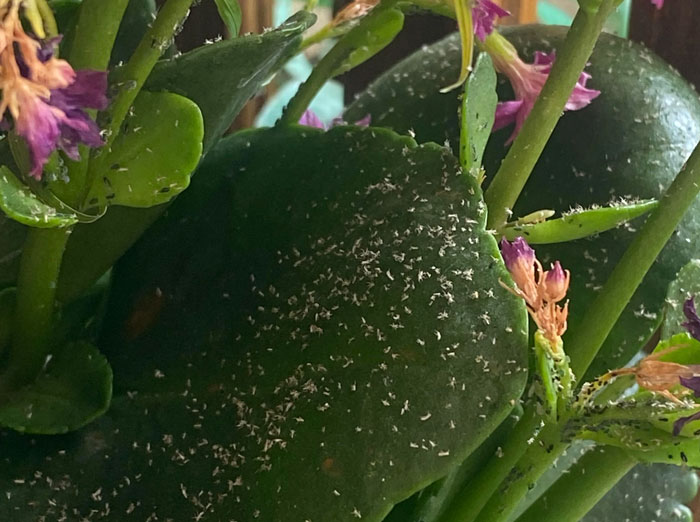
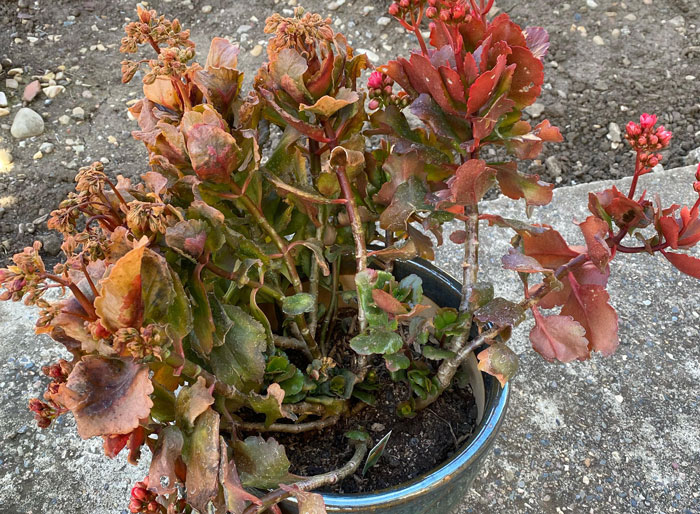














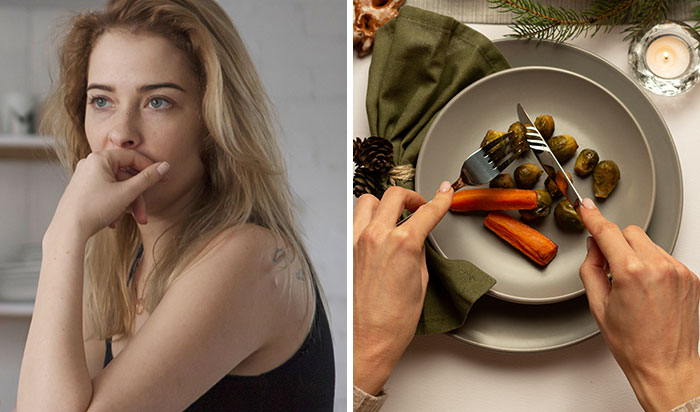
































11
0